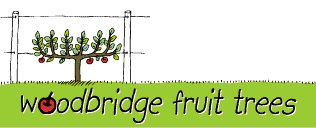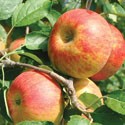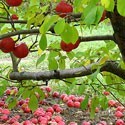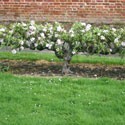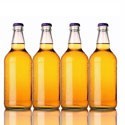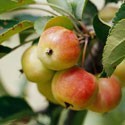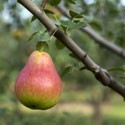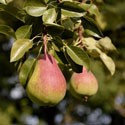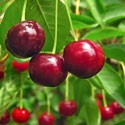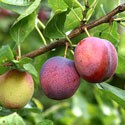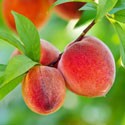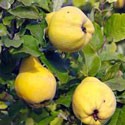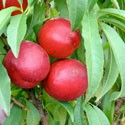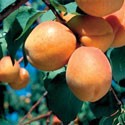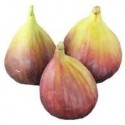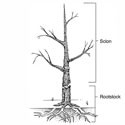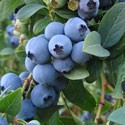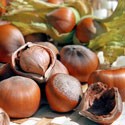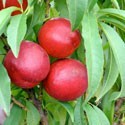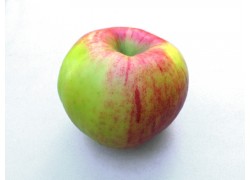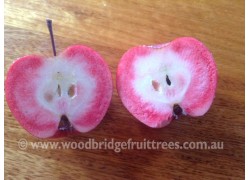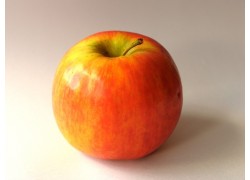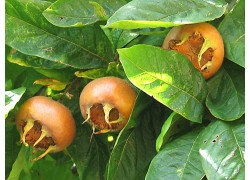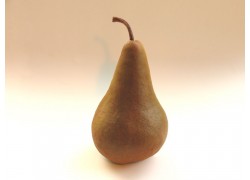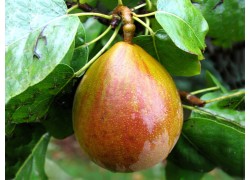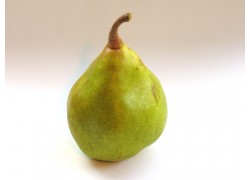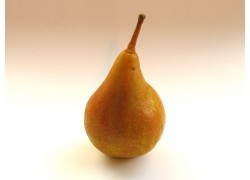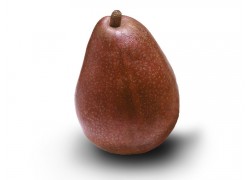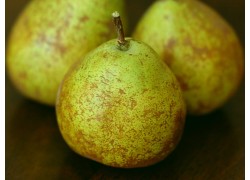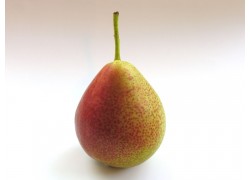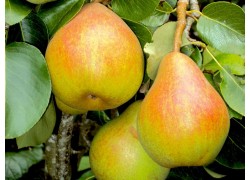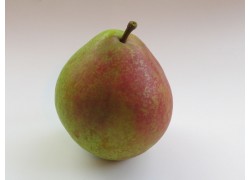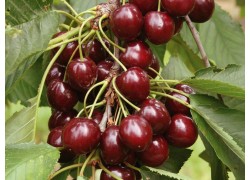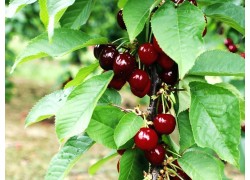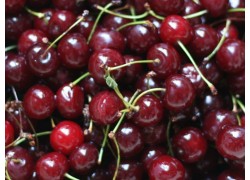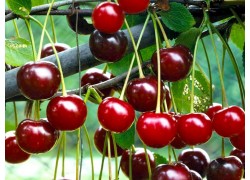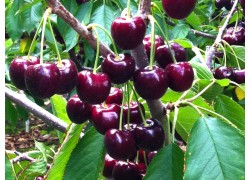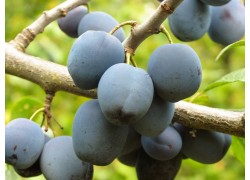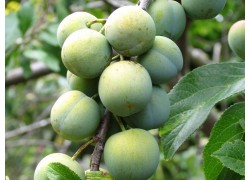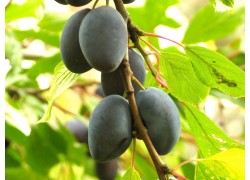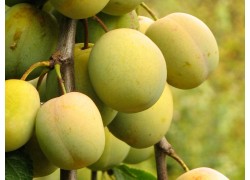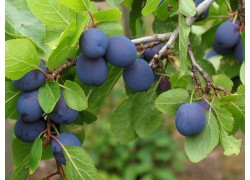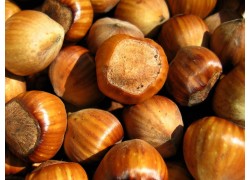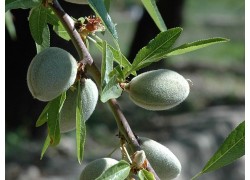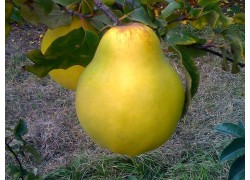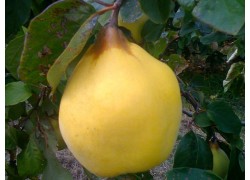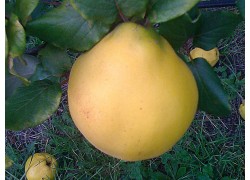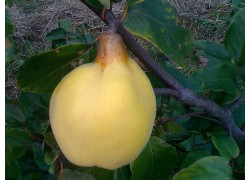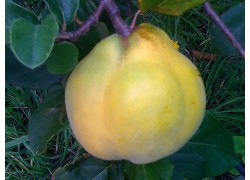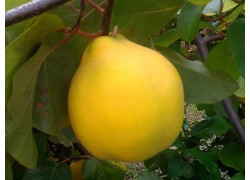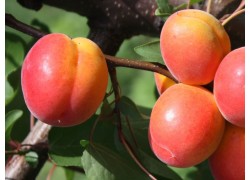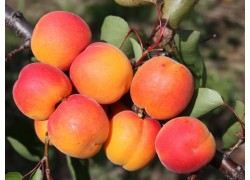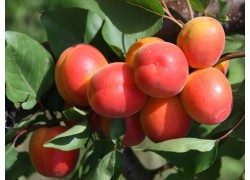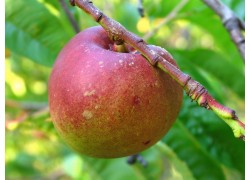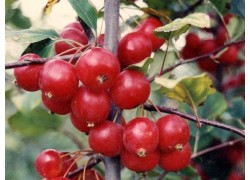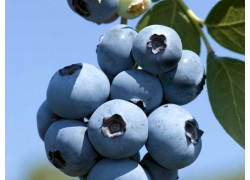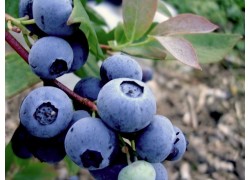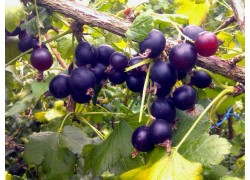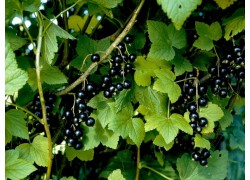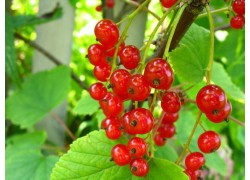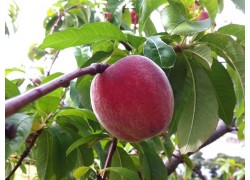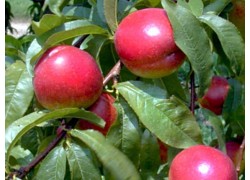No products
Filter
Our range of dwarfing and non-dwarfing fruit trees, nuts, berries.
Fruit Trees There are 256 products.
Subcategories
-
Dwarf Apples
Heritage apple varieties on DWARF rootstock. These apples are ideal for back yards, small orchards, espaliers or anywhere where space is tight. Varieties ripen from Christmas to July providing 6 months of fruit. Wee included some more recent varieties as well as historic ones. There are excellent eating apples, cookers, big, small, common and unusual. Something for every occasion.
-
Semi-dwarfing Apples
Heritage apple varieties on SEMI-DWARFING rootstock. These apples are ideal a free-standing tree, rather than espaliering. They are a little more vigorous than our dwarfing trees.
-
Stepover Apples
Step-over apple trees on EXTRA-DWARFING rootstocks. These highly sought-after trees can make productive hedges half a metre in height. Ideal for edging garden and vegetable beds, or a striking ornamental hedge. We tend to select later ripening varieties so that the fruit are hanging after the leaves have fallen. See our article on step-overs for more information.
-
Cider Apples
Cider apple trees on SEMI-DWARFING rootstocks. These are a selection of specialty cider varieties from the English and French cider traditions. They make superior cider (in the right hands!) and are to the cider world as to the Pinot Noir or Chardonnay are to the world of wine.
-
Crab Apples
Crab apple trees on SEMI-DWARFING rootstocks. These are considered as ornamentals, but can be used in juicing to offset the sweeter apple or pear. Highly regarded as pollinators for apple varieties because of their prolific flowering.
-
Dwarf Pears
Pear trees on DWARFING rootstocks. Dwarfing forms allow these pears to bear much earlier and make more manageable trees than the huge old pear trees seen on old farms. "Pears for your heirs" was the old adage pointing to their longevity, slowness of growth and bearing, and eventual large sized tree. The French (and Belgians) have been responsible for bringing pear culture to it's peak in the 1700s.
-
Perry Pears
Select from our range of Perry pears on Dwarfing rootstocks.
-
Cherries
Cherry trees on DWARFING rootstocks. The sweet cherry varieties we grow have been developed from the European bird cherry (Prunus avium), while the sour cherries (which are still tangy as well as sweet) have been developed from Prunus cerasus, a wild cherry from Asia. Cherries definitely need protection from birds and many growing methods have been developed to accommodate this eg. espalier, spanish bush or fans so that they can be netted.
-
Plums
Plum trees on NON-DWARFING rootstocks. The so-called European Plums we sell were introduced into Europe from Syria and Persia and are the product of long selection and development over the last 1000 years. Plums have pale greenish yellow flesh and rich sugary flavour, ripening in February. Generally two varieties are needed for cross pollination, although there are some that are self fertile. Esplaiering these shuold be done on a fan shape only.
-
Peach
Old style peaches on non-dwarfing rootstock. These are best grown as free-standing trees to 3-4m but can be espaliered in a FAN shape effectively keeping it below 1.8m.
-
Quinces
Quince trees on DWARFING rootstocks. Closely related to the pear, quinces are attractive trees, and the fruit wonderfully aromatic - treasured for cooking, tarts, preserves and jellies.
-
Nectarine
Old style Nectarines on non-dwarfing rootstock. These are best grown as free-standing trees to 3-4m but can be espaliered in a FAN shape effectively keeping it below 1.8m.
-
Apricots
Apricot trees on SEMI-DWARFING rootstocks. These are best grown as free-standing trees to 3-4m but can be espaliered in a FAN shape effectively keeping it below 1.8m. The Moorpark produces a smaller tree, and can be kept smaller on an espalier as well. Medlars produce small trees or can be espaliered easily to 1.5m.
-
Figs
Figs on non-dwarfing rootstocks. Knows for their sensuous fruit both fresh and dried. Figs like long hot summers but not too dry, with well drained soils, preferrably out of the wind. They tolerate being potted. -
Rootstocks
Rootstocks are used for grafting and budding onto. If you know or want to learn how to graft or bud, you can propagate yourself. This year we offer a handful of rootstocks, but sorry no quince or pears.
-
Berries
A selection of raspberries, blackberries, logans, blueberries, currants and other edible berries for the garden.
-
Nut Trees
Hazelnuts and almonds. Hazels are great for mass hedging, but can be trained into a small tree. Almond pollination can be tricky but this self-fertile one allows you to grow plenty with just one tree.
-
Dwarf Stone Fruit
Dwarfing Stone fruit - Peaches, Apricots, Plums, Nectarines. Idea for small espaliers or pots.
-
Rome Beauty Step-Over Ripens: May - June
Originating on the northern bank of the Ohio River in a town called Rome. It appeared from a sucker below the graft of an orchard tree. It's a large brilliant red fruit that resists bruising and is a heavy cropper. Good eating and becomes very sweet. Can tolerate a low chill environment.
$42.50 -
Magnus Summer Surprise Step-Over Ripens: February - March
The fruit are quite attractive - bright red and medium in size, but that is the red flesh and white core are quite remarkable when bitten into. The flavour is sweet and the tree crops heavily. Like its parent, the Huonville Crab, it has purple/ green leaves and stem. Quite remarkable. This apple is the result of my fathers' efforts into apple breeding....
$42.50 -
Pink Lady Step-Over Ripens: June - July
Most people will know Pink Lady because of it's popularity Australia wide. It's has fairly large fruit with excellent appearance, pink to pale red blush over a yellow background. Nicely flavoured pale yellow firm flesh. Matures very late and stores very well. Presently Australia's most famous apple: 3rd generation Australian, starting from Rokewood -->...
$42.50 -
Dutch Medlar Ripens: March - April
Dutch Medlar is a small tree closely related to the quince with unique small fruits 5-6cm that need to be "bletted" to be edible. Often grown for the lovely shape of the tree, with lovely bronze /orange / red leaves. Forms a small tree with beautiful large single white flowers in spring. Matures in March with the quinces, but then need to 'blet' by...
$45.00 -
Williams Ripens: February - March
An attractive large yellow pear. Juicy, tasty soft flesh and best eaten off the trees as it stores less well as other varieties. Is partially self fertile, but will crop better if near another variety of our pears.
$42.50 -
Beurre Bosc Ripens: March
A well known pear - distinctly covered in a deep brown beautiful russet. It has a long shape, often with a gentle curve, and a rich creamy grainy flesh. Very high quality, lasts well, ripens late. Pollination by any other variety of our pears.
$32.50 -
Beurre Hardy Ripens: March
This late ripening pear originates in the Anjou region of France where many of our best pears come from. It's a medium sized roundish pear with a deep orangy brown skin with a fair amount of russet. The yellowish-white flesh is fine, juicy, and of excellent flavour. Bears heavily and crops regularly. An instant favourite! Cooks well. Pollination by any...
$42.50 -
Beurre Superfin Ripens: March
This little-know pear is a delight to eat. Medium sized fruit, with crisp firm flesh, pleasant light-green skin and a classic pear shape. Very juicy, but not over sweet. An instant favourite. Pollination by any other variety of our pears.
$32.50 -
Conference Ripens: March - April
The most popular commercial variety in UK, but uncommon in Australia. Long thin green fruits with some russet, delicate melting flesh when allowed to ripen properly. The key is to pick them when they are still firm and then ripen them on a window sill for 3-4 weeks. Ripen mid season, late March. Keeps well if put into a cool place.
$32.50 -
Durondeau Ripens: February - March
A reddish brown pear with skin covered in a soft russet all over. A classic pear shape. A high quality fruit eaten fresh - just a stunning flavour and texture. Leaves turn attractive red in the autumn when the fruit ripen. Originated in Belgium 1811. Pollination by any other variety of our pears.
$42.50 -
Beurre D'Anjou Ripens: April
This late ripening pear originates in the Anjou region of France where many of our best pears come from. It's a medium sized longish shaped pear with a deep reddish-purplish skin and prominent russet patches. Quite stunning to see them hang amongst the green leaves. It has yellowish white juicy flesh thats highly flavoured, and bears heavily and regularly.
$42.50 -
Bonne De Maline Ripens: March - April
A pear originating in Belgium in the 1820's, also known as Winter Nellis. Bears smallish rounded fruit, greenish brown with a slightly russeted skin. A fine rich buttery juicy yellowish flesh, with lovely flavour. Keeps well, ripens late. Pollination by any other variety of our pears.
$42.50 -
Corella Ripens: April
An attractive pear, yellow skin with an orange / red blush on the sunny side. Firm flesh, sweet and juicy. Stores well. Suitable for fairly low chill conditions. Pollination by any other variety of our pears.
$42.50 -
Doyenne Du Comice Ripens: April
This translates as 'Best on the market' and it really lives up to that name - on of the most wonderful pears that we sell. From France in the 1850's. Skin greenish yellow with an orange cheek when ripe. Medium to large fruit, slightly knobbly and perhaps a little russet and a long stem. Matures fairly late. Pollination by any other variety of our pears.
$42.50 -
Flemish Beauty Ripens: March
A Belgian pear from the 1820's. Rounding shape with green almost speckled skin developing an attractive red/ pink blush on the sunny side. Flesh white, firm, grained and juicy, with a great flavour. Is partially self fertile, but will crop better if near another variety of our pears.
$42.50 -
Josephine Ripens: April - May
A smaller pear with a unique melting soft flesh beneath a fine glossy light green skin covered in a little russet. Memorable texture once tasted! From Belgium 1830, late maturing. Pollination by any other variety of our pears.
$42.50 -
Napoleon Ripens: January
A white fleshed cherry, with variable coloured skin - yellow / orange / bright red. Very attractive, often heart shaped. Less intensly sugared than the purple fleshed varieties more commonly sold today. Pollinated by Stella.
$39.50 -
Simone Ripens: January - February
Simone is one of the new varieties of cherries that have come out of breeding programs in south-west Canada. The fruit is large - almost like a small plum, black, succulent and tasty. Quite resistant (more or less) to splitting when ripe. Self pollinating although having another variety will increase yield. Ripen from mid December to late January.
$39.50 -
Stella Ripens: January
A hugely popular variety, again from a breeding program in south-west Canada 1968. Large fruit almost the size of a small plum, dark purple or black skin, succulent and sweet. Quite resistant to splitting when ripe. Self pollinating although having another variety will increase yield. Has a reputation for pollinating most other cherries, so a must-have...
$39.50 -
Kentish Ripens: January
Are the very early sour cherries esteemed for preserves and jam. They are bright red with very pale coloured flesh and the trees are extremely tough, productive and prolific. Self fertile.
$39.50 -
Morello Ripens: January
Morello is a sour cherry prized for preserving, cooking with and making Glacé cherries. The Polish love to lace them with Vodka. They have smallish dark fruit with dark flesh, and a rich slightly almondy flavour. Sour cherries tend to be more disease resistant than sweet cherries, but the birds will still get them! Self fertile.
$39.50 -
Lapin Ripens: January - February
Lapin is a cross between Stella and Van, and ripens a bit later in the season. From Canada in the 1960’s. Large plump fruit - almost like a small plum, black, succulent, tasty and sweet. Quite resistant (more or less) to splitting when ripe. Self pollinating though it's better to plant two just in case (and extend the season).
$39.50 -
Angelina Ripens: February
This is the classic purple highly flavoured European Plum. Originated in France but has been widely spread around the world. It's purple in colour and has a rich flavour that cooks superbly and is great eaten fresh. Ripens February.
$39.50 -
Greengage Ripens: February
A small round greenish yellow plum with intense flavour (the Cox's Orange of the plums) tends to crop incredibly heavily and then has a year's rest. Great for stewing, eating and bottling. Considered partially self fertile but having another plum (eg Coe's Golden Drop) will increase yield.
$39.50 -
Prune Splendour Ripens: February
An American prune with rich aromatic flavour. Luther Burbank in one of his many breeding programmes about 1905 turned his attention to breeding a better prune. Splendour is a cross between d'Agen and a Hungarian prune. It's long in shape, dark purple with a yellow flesh, and sweet to taste. Estimated 11% sugar (parent d'Agen has about 8%).
$39.50 -
Victoria Ripens: February
This plum is most fondly remembered by English immigrants. Its skin is pink, the flesh a clear yellow and the stone slips. An amazing producer - needing supports under the ladened branches when almost ripe, to prevent limbs breaking. Considered self-fertile bue will crop better near another European plum.
$39.50 -
Coe's Golden Drop Ripens: February - March
This famous old English plum has a clear yellow skin and gorgeous yellow flesh with a sweet melting flavour. Amazing eaten (juicy!), and good for stewing and jams. Pollinated by Damson, Angelina, Greengage. Ripens late February
$39.50 -
Damson Ripens: March
These are having a renaissance at present because of their qualities as a cooked fruit for jams, sauces and preserves. They are actually tiny plums about the size of a large grape. When cooked, they develop a deep rich flavour unequalled in the plum family. A small tough tree with some spikes, but not much cherry slug damage. Heavy crop during February...
$39.50 -
Hazelnut Mixed Pack 4 Plants Ripens: March
Pollination of hazelnuts is complex, and to make it easy, we recommend having all 4 varieities to set fruit. Hazelnuts produce a large bush that suckers, although can be trained / pruned into a low tree with a single stem. This hazelnut pack is 4 advanced suckers, containing a mixture of varieties to afford the best chance of pollination and bearing nuts....
$112.00 -
Almond Ripens: April - May
This sweet flavoursome soft shelled almond is self-fertile, producing a tree about 3m high. A very attractive tree covered in single white flowers just as the leaves emerge in spring. It likes it hot in summer, but well drained soil and enough watering during the summer growth. It needs some winter chill to pollinate but will not tolerate frost. Expect...
$42.50 -
Champion Ripens: March - April
A quince originally from the USA and a very popular variety in Australia. A very reliable and prolific quince producing large amounts of rather squat pear shaped fruit. Cooks to pale pink. Mid season.
$39.50 -
De Vrajna Ripens: March
Also known as Berezki from Serbia - very attractive longish pear shaped fruits. Smooth pale yellow skin and very aromatic flesh. Flowers are white, cooks to a pink. Matures early. Sorry, we only had a handfull of these for sale.
$39.50 -
Pineapple Ripens: March - April
Developed by Luther Burbank in California USA in about 1900. It has a slight pineapple flavour, bears prolifically and has a nice pear shaped with short, stumpy neck and bears medium to late. Cooks to pale pink.
$39.50 -
Powells Prize Ripens: March - April
This is thought to be an Australian quince. Large handsome leaves, smallish pear shaped fruit that cooks to a pink. Matures early - mid season.
$39.50 -
Smyrna Ripens: April
A Turkish quince. Produces a spreading tree, with large leaves. The fruit are large, long and pear-like in shape. Light lemon in colour, very aromatic and firm when cooked, to pale pink. Matures here early April. White flowers with a faint trace of pink.
$39.50 -
Van De Man Ripens: April
A quince with a very squat shape and abeautiful bright yellow colour. Cooks to an orange pulp with no grit and a great aromatic spicy flavour. Matures late and has the palest pink flowers. Yet another Luther Burbank selection from California about 1900.
$39.50 -
De Bourgeaut Ripens: April
A French variety with large pear shaped fruit. The skin is downy and the flesh cooks firmly to a deep pink, with a rich flavour. Beautiful pale pink flowers. Matures late.
$39.50 -
Goldrich Ripens: January - February
A Canadian apricot that produces a large tree with a bountiful number of large superior succulent fruit. Orange with a red cheek. They may grow on a trellis, but will want to grow larger than a Moorpark. Requires a Rival or Moorpark for pollination.
$39.50 -
Moorpark Ripens: January - February
Our favourite well-know old-style apricot with great flavour. Unlike the more modern varieties, the fruit are a little smaller but the flavour more intense. A classic apricot colour - orange with a red blush on the sunny side. Does well in dry summers. Makes a compact tree and is self fertile.
$39.50 -
Rival Ripens: January - February
A Canadian variety of apricot, similar to Goldrich. Produces a large tree with a bountiful number of large superior succulent fruit. Orange with a red cheek. They may grow on a trellis, but will want to grow larger than a Moorpark. Requires a Goldrich or Moorpark for pollination.
$39.50 -
Goldmine Nectarine Ripens: February - March
This is the old white-fleshed Nectarine, ripens late February-March here and has intense rich flavour, but most important of all is fairly resistant to leaf curl. In good conditions it will rewards you with a huge amount of fruit,
$39.50 -
Gorgeous Crab Ripens: March - April
A small tree to 4m with an amazing crop of 2cm round clusters of crimson red fruits. Great in flower arrangements and jelly. Originating in NZ.
$39.50 -
Blueberry Brigitta Ripens: January - February
This late season Australian bred blueberry crops abundantly, and produces firm fruit that resist bruising. The fruit tend to ripen at the same time it's ideal for mass picking - useful for storing / freezing / processing all at once. Keeps well. Blueberries in general produce a shrub with new branches suckering up from the base. They require chill, and...
$21.00 -
Blueberry Blue Rose Ripens: December
A blueberry with particularly large fruit, starting to ripen as early as christmas and cropping through until late summer. Blueberries in general produce a shrub with new branches suckering up from the base. They require chill, and leaves turn a lovely crimson colour in Autum. The fruit are prized eaten fresh, and can be stored well frozen or cooked in...
$21.00 -
Blueberry Denise Ripens: January - February
A vigorous blueberry with sweet fruit, producing a smaller bush, about 1.5m. Berries often have a pinking hue. Blueberries in general produce a shrub with new branches suckering up from the base. They require chill, and leaves turn a lovely crimson colour in Autum. The fruit are prized eaten fresh, and can be stored well frozen or cooked in pies, jams...
$21.00 -
Jostaberry Ripens: February - March
Jostaberries are a cross between a black currant and a goosberry. Size of the fruit is in between it's parents and the flavour is also a mixture. Sweet but tangy, this fruit is great eaten fresh but ideal for jam, pies and preserved. The bush is thornless, growing up to 1.5m, can be easily trained onto a trellis. Bird protection essential!
$16.00 -
Blackcurrant Ripens: February - March
A superb rich flavoured dark berry, famous for making cordial, but also wonderful in jams, pies, muffins, cakes, wines, syrups. Bird protection essential!
$16.00 -
Redcurrant Ripens: February - March
Large translucent ruby red berries ripen on bunches and can be easily tickled off when ripe. Crop heavily and over a long season, redcurrants have a spritely balance of acid and sweet. can be eaten fresh and used in drinks, jams, pies. Bird protection essential!
$16.00 -
Anzac Peach Ripens: January - February
This Australian peach is about 100 years old! White flesh with a ruby red skin. Amazingly sweet, producing abundant fruit in mid January for about a month. Doesnt seem to be to susceptible to curly leaf. Self fertile.
$39.50 -
Fantasia Nectarine Ripens: February
A yellow fleshed nectarine, freestone that ripens in February. Good flavour and a firm flesh. Lovely orange to red skin, if these are looked after and fed and watered during summer, the fruit can grow quite large - bigger than a tennis ball. Self-fertile.
$39.50
